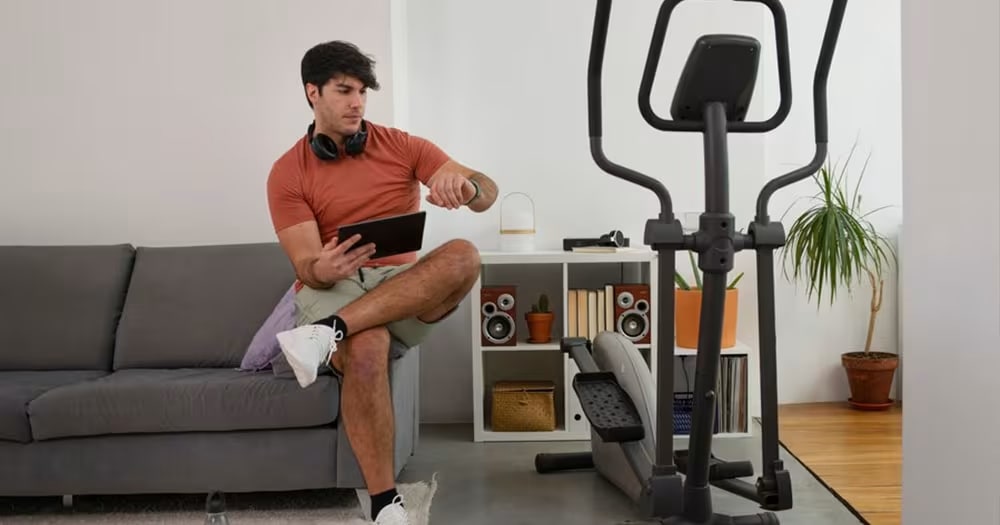In today's digital age, fitness devices have revolutionized the way we approach health and fitness. From smartwatches to fitness trackers, these gadgets offer valuable insights into our physical activity, sleep patterns, and overall well-being.
However, maximizing the benefits of a fitness device requires more than just strapping it on and hoping for the best. In this comprehensive guide, we'll delve deep into the world of fitness technology, exploring everything you need to know to optimize your workout experience and achieve your fitness goals.
Getting Started: Choosing the Right Device
Selecting the perfect fitness device is the first step on your journey to fitness success. With a plethora of options available on the market, it's essential to consider factors such as features, compatibility, and budget when making your decision. Popular brands like Fitbit, Garmin, Apple, and Samsung offer a wide range of devices to suit different preferences and lifestyles.
Whether you're looking for a basic activity tracker or a high-tech smartwatch with advanced fitness features, there's something for everyone. Take your time to research and compare different models before making your purchase to ensure that you find the right device to meet your needs.
Once you've chosen your device, the next step is to set it up and configure it to your preferences. Most fitness devices come with accompanying apps that you can download onto your smartphone or tablet. These apps allow you to sync your device, customize settings, and view your activity data in more detail.
Follow the manufacturer's instructions to set up your device, including charging it, pairing it with your smartphone via Bluetooth, and configuring settings such as display preferences, activity goals, and notification preferences.
Personalizing Your Device Settings
Personalization is key to getting the most out of your fitness device. Take some time to explore the settings menu on your device and adjust them to suit your preferences and goals. This may include customizing metrics such as step count, distance travelled, calories burned, and active minutes to align with your fitness objectives.
You can also configure notification settings to receive alerts for incoming calls, texts, and app notifications while you're working out. Additionally, many fitness devices offer the option to set reminders to move, drink water, or take breaks throughout the day to help you stay on track with your goals.
Tracking Your Fitness Metrics
One of the primary functions of a fitness device is to track various metrics related to your physical activity and health. These may include steps taken, distance travelled, calories burned, heart rate, sleep patterns, and more. By tracking these metrics, you can gain valuable insights into your progress and make informed decisions about your fitness routine.
For example, you can monitor your heart rate during exercise to ensure that you're working out at an appropriate intensity level or track your sleep patterns to identify areas for improvement. Many fitness devices also offer features such as automatic activity recognition, workout summaries, and real-time feedback to help you stay motivated and on track with your goals.
Utilising Advanced Features
In addition to basic activity tracking, many fitness devices come equipped with advanced features that can take your workouts to the next level. These may include GPS tracking, multisport modes, guided workouts, and more. For example, GPS tracking allows you to accurately track your outdoor runs, hikes, and bike rides, while multisport modes enable you to seamlessly switch between different activities without having to manually change settings.
Guided workouts provide step-by-step instructions and coaching tips to help you perform exercises correctly and achieve your fitness goals more effectively. Take advantage of these advanced features to diversify your workouts, track your performance with greater accuracy, and receive personalized coaching and feedback along the way.
Integrating with Your Lifestyle
To truly optimize your workout experience, integrate your fitness device seamlessly into your lifestyle. Sync your device with popular health and fitness apps such as Strava, MyFitnessPal, and Nike Training Club to access additional features and expand your tracking capabilities. Many fitness devices also offer social features that allow you to connect with friends, join challenges, and share your achievements on social media.
Participating in challenges, connecting with friends, and sharing your progress online can help you stay motivated, accountable, and engaged with your fitness journey. Additionally, consider joining online communities or forums related to your specific fitness interests or goals to connect with like-minded individuals, share tips and advice, and stay inspired along the way.
Troubleshooting and Maintenance
While fitness devices are designed to be user-friendly and reliable, occasional issues may arise that require troubleshooting. Common problems include connectivity issues, syncing errors, battery life concerns, and sensor accuracy issues. If you encounter any issues with your device, refer to the manufacturer's guidelines and online resources for troubleshooting tips and solutions. Additionally, practice good maintenance habits to prolong the life of your device and ensure optimal performance. This may include regular cleaning, proper storage, and software updates to keep your device running smoothly.
Staying Safe and Secure
While fitness devices offer many benefits, it's essential to prioritize safety and security when using them. Ensure the accuracy and reliability of your device by following proper usage guidelines and minimizing measurement errors during workouts. For example, make sure to wear your device snugly on your wrist or torso to ensure accurate heart rate monitoring, and avoid wearing it too tight or too loose.
Protect your privacy and data by reviewing privacy policies, adjusting privacy settings, and being mindful of sharing personal information online. By taking these precautions, you can enjoy the benefits of your fitness device while minimizing potential risks.
Incorporating Fitness Devices into Daily Routines
One of the most effective ways to maximize the benefits of your fitness device is to integrate it into your daily routine seamlessly. This means wearing your device consistently throughout the day, not just during workouts. By doing so, you can gain a holistic understanding of your overall activity levels and identify patterns that can inform your fitness strategies.
For example, if your device reveals that you’re most sedentary during certain hours, you can set reminders to stand, stretch, or take short walks during those times. Likewise, using features like step tracking or calorie counting can encourage you to make more conscious decisions about incorporating physical activity into everyday tasks, such as taking the stairs instead of the elevator or walking to nearby errands.
Leveraging Data for Long-Term Goals
Fitness devices offer the unique ability to track progress over time, giving you a long-term view of your fitness journey. By analyzing trends in your activity levels, sleep quality, or heart rate, you can make informed adjustments to your routine to achieve lasting results.
For instance, if your device shows a decline in activity or sleep consistency, you can proactively address the issue before it hinders your progress. Use your fitness tracker to celebrate milestones, such as reaching a specific number of steps in a week or maintaining a steady workout schedule for a month. These small victories build confidence and reinforce positive habits.
Exploring Wearable Tech Innovations
As technology evolves, fitness devices are becoming more sophisticated, offering features that go beyond basic activity tracking. Innovations such as blood oxygen monitoring, ECG sensors, and stress tracking are becoming standard in many high-end models. These advancements not only enhance fitness tracking but also contribute to overall health awareness.
For instance, blood oxygen monitoring can help athletes optimize their training, while ECG sensors can alert users to potential heart health issues. Stress tracking features allow individuals to identify stressors and practice mindfulness techniques, fostering mental and emotional well-being alongside physical health.
Balancing Fitness Goals with Realistic Expectations
While fitness devices can be incredibly motivating, it's important to approach your fitness journey with realistic expectations. Remember, these tools are meant to assist and guide you, not replace effort and consistency. Be patient with your progress and focus on incremental improvements rather than drastic changes.
Use the data provided by your device as a benchmark rather than a definitive measure of success. Everyone’s fitness journey is unique, and the ultimate goal should be to cultivate a sustainable, healthy lifestyle rather than striving for perfection.
The Social and Competitive Edge of Fitness Devices
Many fitness devices come with social features that foster a sense of community and competition. Participating in challenges or sharing achievements with friends and family can boost motivation and accountability. Some apps even allow you to join virtual groups based on shared fitness interests or goals, creating a supportive network that keeps you inspired.
Friendly competition, such as step challenges or distance goals, can add a fun element to your fitness journey. Whether it’s challenging a coworker to a weekly step goal or teaming up with friends for a virtual fitness challenge, the social aspect of fitness devices can transform individual goals into collective achievements.
The Role of Fitness Devices in Mental Well-Being
Beyond physical health, fitness devices can contribute to mental well-being by promoting mindfulness and stress management. Many modern trackers come with features like guided breathing exercises, meditation sessions, and stress level monitoring. These tools encourage users to focus on their mental health, which is an integral part of overall wellness.
By incorporating these features into your routine, you can cultivate a more balanced approach to health that prioritizes both body and mind. For instance, taking a few minutes each day to practice guided breathing can help reduce anxiety and improve focus, enhancing not just workouts but daily life as a whole.
Adapting to New Trends in Fitness Technology
The fitness tech industry continues to innovate, introducing new features and integrations that can further enhance your experience. For example, the rise of AI-powered coaching and real-time form correction is changing the way people approach their workouts. Staying informed about these trends allows you to make the most of your device and adapt your fitness routine to incorporate new, cutting-edge tools.
As these devices evolve, they are likely to play an even greater role in bridging the gap between fitness and healthcare. From detecting potential health issues to offering personalized wellness plans, the future of fitness devices is geared towards a more comprehensive approach to health and fitness.
Developing a Sustainable Relationship with Fitness Devices
Lastly, it’s important to strike a balance between relying on your fitness device and maintaining intrinsic motivation. While these gadgets offer valuable insights and encouragement, your commitment to leading a healthy lifestyle ultimately comes from within. Use your device as a partner in your journey, but don’t let it dictate your self-worth or fitness progress.
Embrace the process, celebrate small wins, and stay flexible in your approach. A fitness device is a tool to empower you, but the most significant changes come from consistent effort, a positive mindset, and a willingness to grow.
Mastering your fitness device is a journey that requires patience, experimentation, and dedication. By following the tips and guidelines outlined in this comprehensive guide, you can optimize your workout experience, track your progress effectively, and achieve your fitness goals with confidence.
Whether you're a beginner or a seasoned athlete, harnessing the power of your fitness device will help you stay motivated, accountable, and on track towards a healthier, happier lifestyle. So go ahead, strap on your device, and embark on your fitness journey with confidence!






















